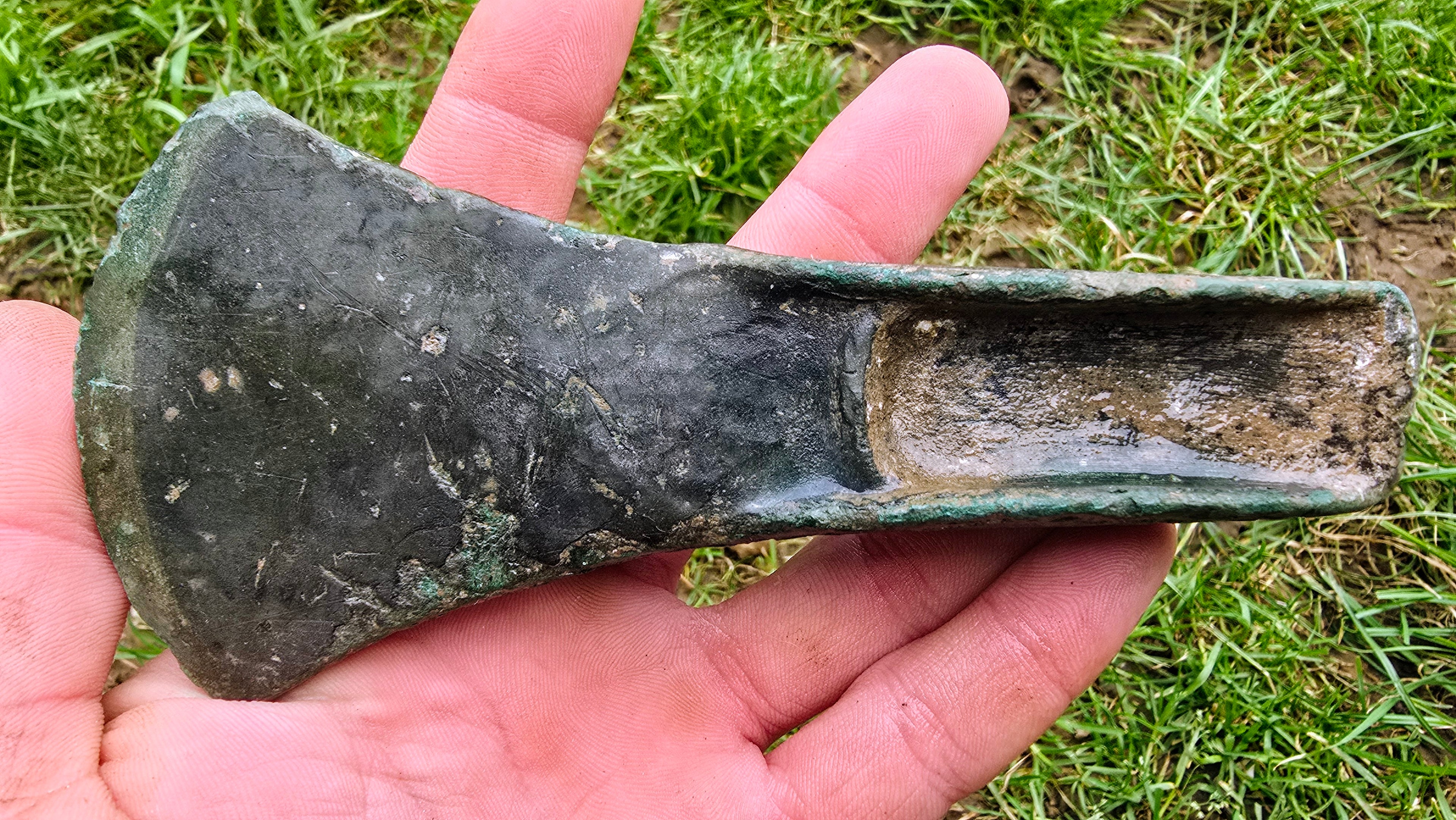This weeks 'Find of the Week'
Updated every Sunday at 7 pm
Here is this week's awesome 'Find of the Week'. Below the initial picture, you'll find all the past week's victors.
Join UK Fossil Collecting and Archaeology Hub and upload your best find from the UK.
We’re proud to have an amazing community of nearly 8,000 enthusiastic members in our private Facebook group. To enter, simply share your best UK find in the group. If your post gets the most reactions that week, your discovery could be featured here!And there’s more… every Find of the Week is automatically entered into our annual Prize Draw, held on 17th January - my birthday. It’s my way of giving back and celebrating with this brilliant community.

Bronze age Palstave Axe Head found by Casey Rich
Broze Age Palstave Axe Head
On just my second visit, and walking less than a mile - I uncovered something truly special: a beautifully preserved Bronze Age palstave axe head, dating back around 3,500 years. It was an early, misty morning, the kind where something feels different in the air. I’d found nothing but the usual moo tubes and shotgun shells, when a clean signal changed everything.
This type of axe, known as a palstave, was cast in bronze and likely used for woodworking, but it may also have carried status or ceremonial value. The craftsmanship is still clear even after thousands of years underground. It’s a powerful reminder of how rich the Dorset landscape is with hidden history - sometimes all it takes is one careful step and a little luck.
I haven’t found much else on that land since, but that moment stands out: the stillness, the weight of the axe in my hand, and the sense that someone long gone had once held it for a very different purpose.
"A moment of pure joy"
-

The best feeling ever!
This Bronze Age palstave axe head, around 3,500 years old, shows remarkable preservation. The rich green patina speaks to centuries underground, while the two-tone colouring along the blade hints at its sharpened edge - still visible after millennia. The stop ridge and flanges are well defined, designed to secure the axe within a wooden haft bound with leather or sinew. Cast in a bivalve mould, it reflects a widespread tool form used across Bronze Age Britain.
-

The look of pure joy
The expression on my face says it all - pure joy, holding a 3,500-year-old palstave axe head just moments after unearthing it from a nearby ploughed field. Its solid bronze form, still sharply defined, is a direct link to the Bronze Age people who once lived and worked this land. Discoveries like this are rare and deeply moving, reminding us how much history lies just beneath our feet, waiting for the right moment to return to the light.
-

Nearby tumuli
The chalk ridges near Kingston Russell and the Bridehead Estate are dotted with ancient tumuli - Bronze Age burial mounds that subtly rise from the landscape. These low, grass-covered earthworks, often arranged in clusters, mark the resting places of early communities. Their weathered forms blend seamlessly into the rolling hills, offering a quiet testament to prehistoric life and ritual. Many remain unexcavated, their secrets preserved beneath centuries of soil and turf.


